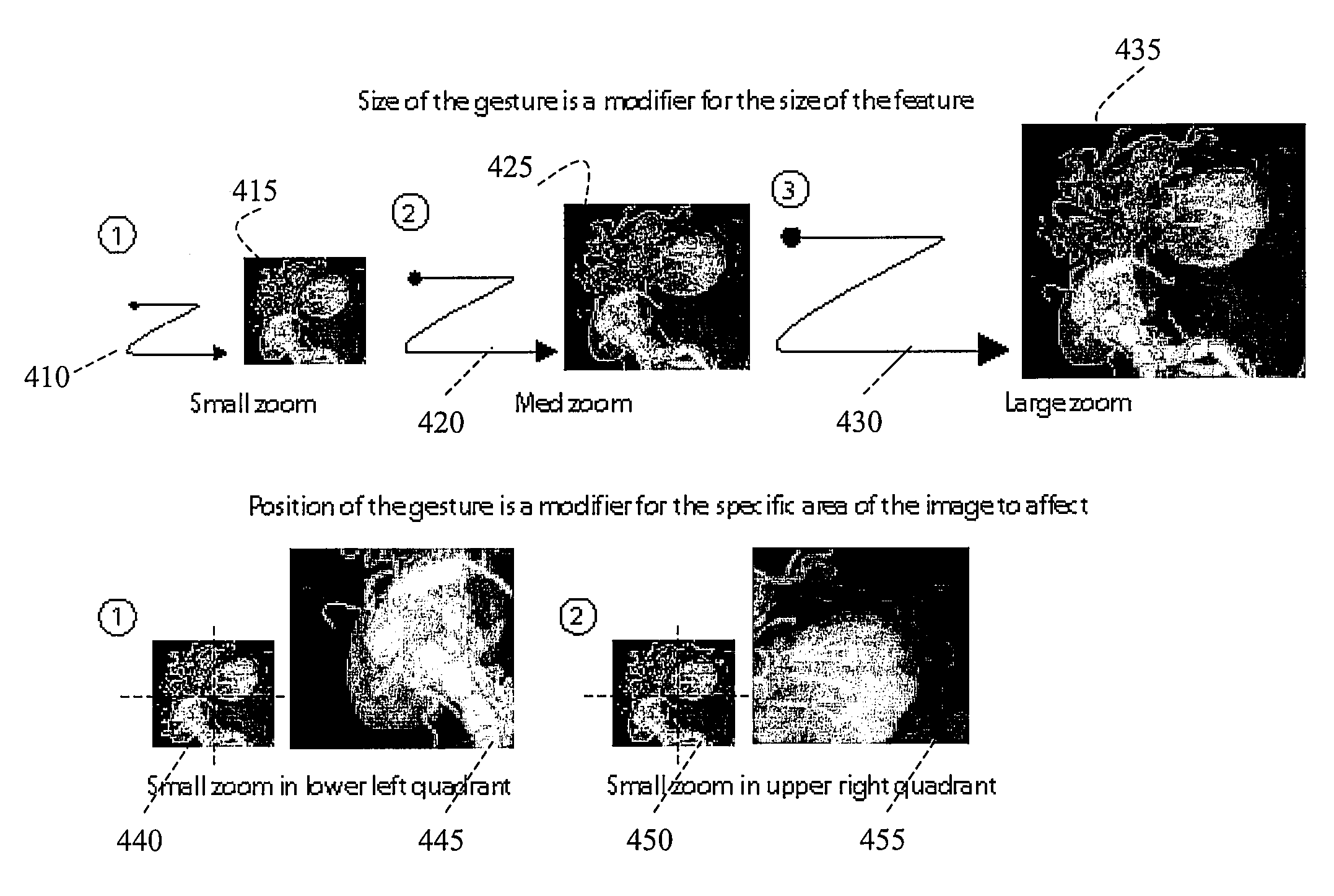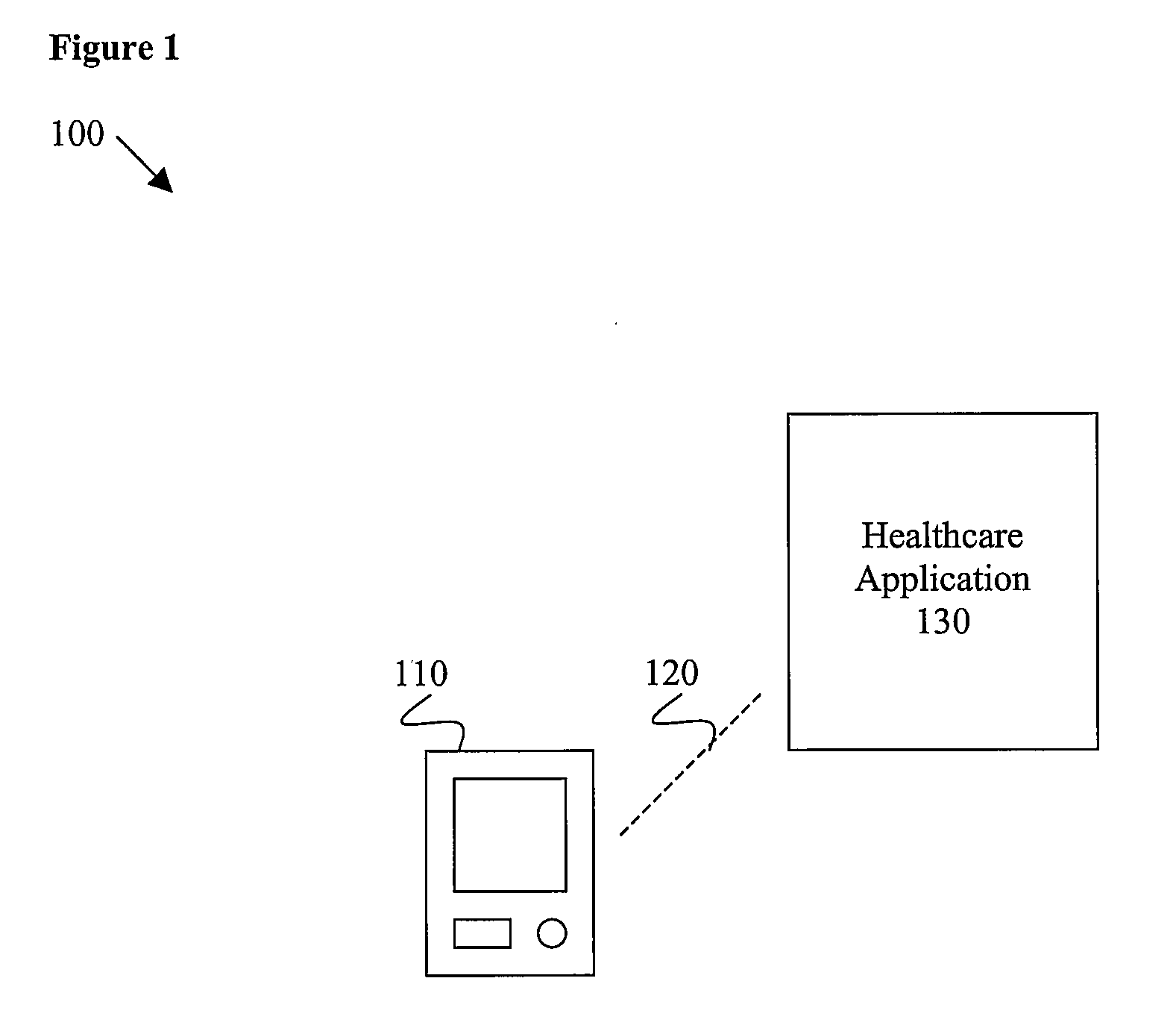Healthcare personnel may encounter many difficulties or obstacles in their workflow.
In a healthcare or clinical environment, such as a hospital, a large number of employees and patients may result in
confusion or
delay when trying to reach other medical personnel for examination, treatment, consultation, or
referral, for example.
A
delay in contacting other medical personnel may result in further injury or death to a patient.
Additionally, a variety of
distraction in a clinical environment may frequently interrupt medical personnel or interfere with their job performance.
Cluttered workspaces may result in efficient workflow and service to clients, which may
impact a patient's health and safety or result in liability for a healthcare facility.
Data entry and access is also complicated in a typical healthcare facility.
Such
dictation methods involve a healthcare practitioner sitting in front of a computer or using a telephone, which may be impractical during operational situations.
Access outside of the facility or away from a computer or telephone is limited.
Thus, management of multiple and disparate devices, positioned within an already crowded environment, that are used to perform daily tasks is difficult for medical or healthcare personnel.
Additionally, a lack of
interoperability between the devices increases
delay and inconvenience associated with the use of multiple devices in a healthcare workflow.
In a healthcare environment involving extensive interaction with a plurality of devices, such as keyboards, computer mousing devices, imaging probes, and
surgical equipment,
repetitive motion disorders often occur.
During a
medical procedure or at other times in a medical workflow, physical use of a keyboard, mouse or similar device may be impractical (e.g., in a different room) and / or unsanitary (i.e., a violation of the integrity of an individual's
sterile field).
Re-sterilizing after using a local
computer terminal is often impractical for medical personnel in an operating room, for example, and may discourage medical personnel from accessing
medical information systems.
Imaging systems are complicated to configure and to operate.
In many situations, an operator of an imaging system may experience difficulty when scanning a patient or other object using an imaging
system console.
For example, using an imaging system, such as an
ultrasound imaging system, for upper and lower extremity exams, compression exams, carotid exams, neo-natal head exams, and portable exams may be difficult with a typical system control console.
An operator may not be able to physically reach both the console and a location to be scanned.
Additionally, an operator may not be able to adjust a patient being scanned and operate the system at the console simultaneously.
An operator may be unable to reach a telephone or a
computer terminal to access information or order tests or consultation.
Providing an additional operator or assistant to assist with examination may increase cost of the examination and may produce errors or unusable data due to miscommunication between the operator and the assistant.
PACS imaging tools have increased in complexity as well.
Thus, interactions with standard input devices (e.g., mouse, trackball, etc.) have become increasingly more difficult.
Radiologists have complained about a lack of ergonomics with respect to standard input devices, such as a mouse, trackball, etc.
Scrolling through large datasets by manually cine-ing or
scrolling, repeated mouse movements, and other current techniques have resulted in carpel tunnel syndrome and other repetitive stress syndromes.
Radiologists have not been able to leverage other, more ergonomic input devices (e.g., joysticks, video editors, game pads, etc.), because the devices are not custom configurable for PACS and other healthcare application interactions.
Tablets, such as Wacom tablets, have been used in graphic arts but have no current applicability or interactivity with other applications, such as healthcare applications.
Handheld devices, such as personal digital assistants or
pocket PCs, have been used for general scheduling and note-taking but have not been adapted to healthcare use or interaction with healthcare application workflow.
Unfortunately, the system is unaware of a specific level of
zoom that the user is requesting from this gesture based interaction.
Such repetition may not only be
time consuming, but may also be a physical drain on the user.
As discussed above, clinicians, especially surgeons, are challenged with maintaining a
sterile environment when using conventional computer devices such as a mouse and keyboard.
However, problems remain with these approaches.
Voice
command and control appears to be a viable solution but, due to proximity issues and presence of multiple people in an operating room providing
confusion and interference, use of voice
command and control may not be very practical or effective.
Use of a thin-air display still suffers from very complex interaction with computer(s) in the clinical environment.
In most cases, interaction problems are compounded by poor graphical user interfaces for functions such as zooming, cine, window scroll (which may involve a more
continuous interaction), etc.
However, for zooming,
scrolling or cine, users will have to write the corresponding characters multiple times, adding complexity to the process.
 Login to View More
Login to View More  Login to View More
Login to View More 


